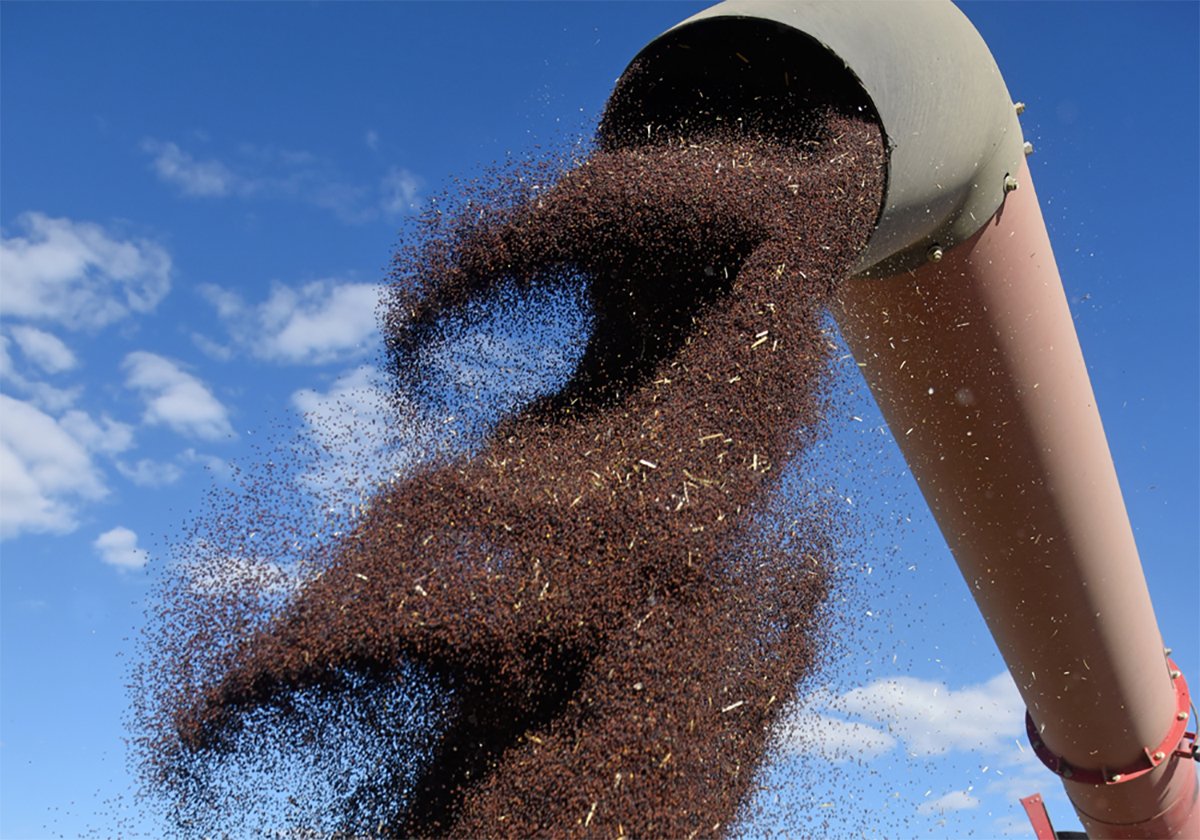Serious problems due to herbicide-spray drift can be prevented, says Clark Brenzil, provincial weed specialist with Saskatchewan Agriculture.
“For herbicides to do their intended job, they must reach the target weeds, not be lost in the air where they can move and harm neighboring crops and the environment,” Brenzil said.
“And the key to effective herbicide application is simple – increasing the droplet size by using a nozzle that is specialized for that purpose.”
Tom Wolf, a research scientist at Agriculture Canada’s Saskatoon Research Centre, said while coarser sprays can help minimize drift, they aren’t as effective on weeds such as foxtail and kochia, which are difficult to make wet.
Read Also

Ag minister says tariff situation with China is fragile, volatile
Agriculture ministers from across Canada said they heard canola producers’ concerns about tariffs but it seems unlikely they can do much about them.
“The large drops bounce off the leaves,” Wolf said.
“But some new nozzles mix air with the spray liquid inside the nozzle, which results in large droplets containing air bubbles. These droplets shatter on impact with plant leaves, which spreads many smaller droplets over the leaf where they are more easily retained. These nozzles are venturi or air induction types, and are available from most nozzle manufacturers.”
Speed a factor
High travel speeds can also increase drift, even if the herbicide has been applied with a coarser spray. This is a particular problem with high-clearance sprayers.
Spray applicators also want to ensure they spray when the atmosphere is unstable.
Under sunny daytime conditions, the atmosphere is considered unstable because the air near the ground is much warmer than the air above. Under these conditions, there is considerable turbulence in the atmosphere, and adjacent air layers mix readily with each other.
“So, if the air contains some drift, this drift is quickly dispersed upward and downward, which dilutes it with clean air and reduces its impact on the off-target plants,” Wolf said.
Most drift complaints involve spraying under stable or temperature-inversion conditions. Inversion occurs at night when the earth cools off and the air near the ground is cooler than the air above it. Air layers do not mix, so any drift in the air remains concentrated and may hang over the treated area for a long time. If wind speed increases, a concentrated spray drift cloud is moved off the treated area and can cause considerable damage at its destination.
“Inversions are usually associated with dead-calm conditions, which may cause well-meaning applicators to spray in a misguided effort to avoid wind,” Wolf said.
“The danger is that the initial wind after an inversion is often very slow and unpredictable in direction. This can cause the concentrated drift, which had been hanging over the field like a cloud of fog, to move to a sensitive area and cause crop damage.”
Where practical, said Brenzil, drift can be reduced by taking the following measures:
- Spray under ideal environmental conditions.
- Reduce travel speed.
- Use higher carrier volumes.
- Use low-drift nozzles or shrouds.
- Take extra care on the outside of the field.
“Optimum nozzle size and weather conditions are important when spraying herbicides, and so is the communication of intentions,” Wolf said.
“People must be informed. Prior to spraying near a farmyard, nearby residents and landowners should be told about the plans to spray and about the precautions the applicator intends to take. Consideration of others and of the environment is critical.”














